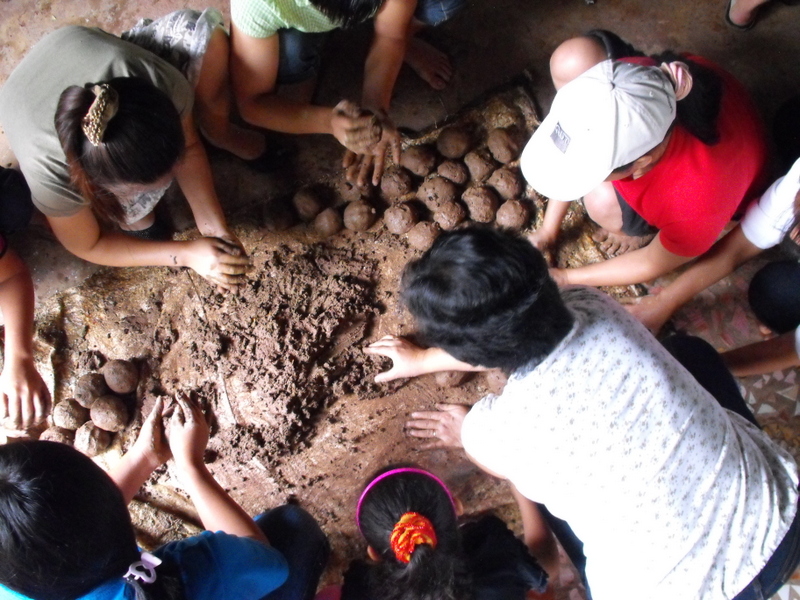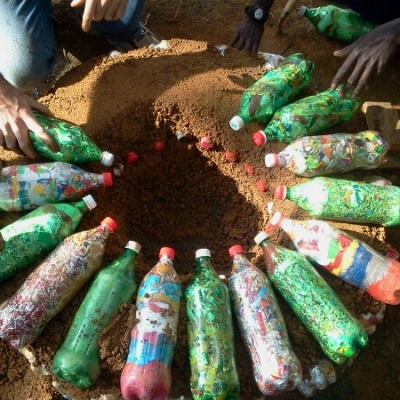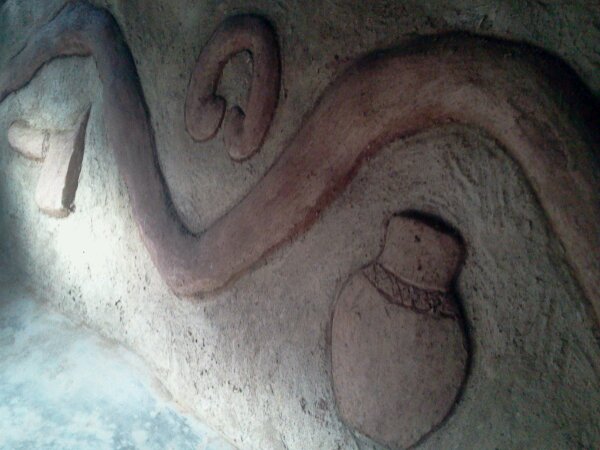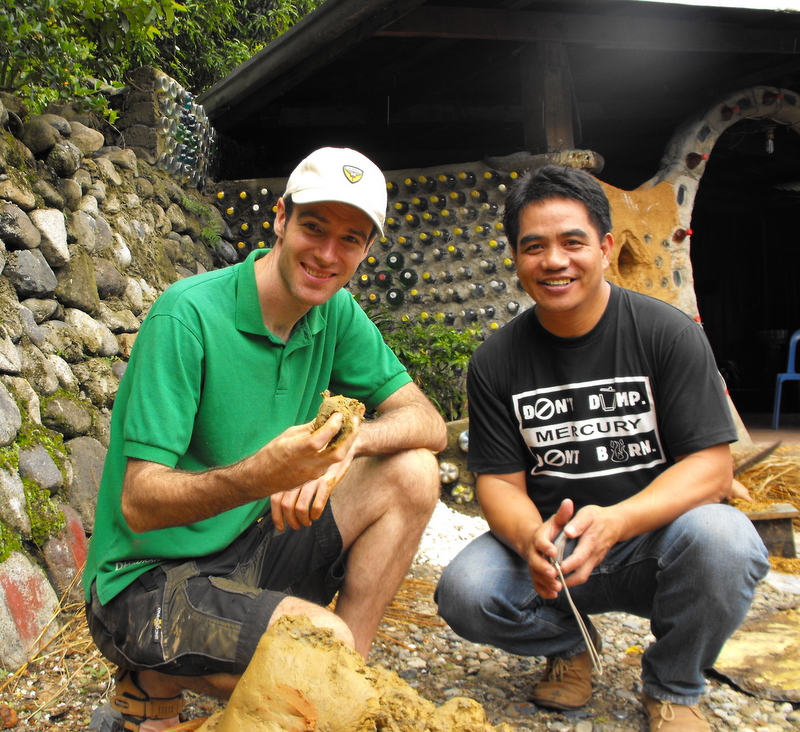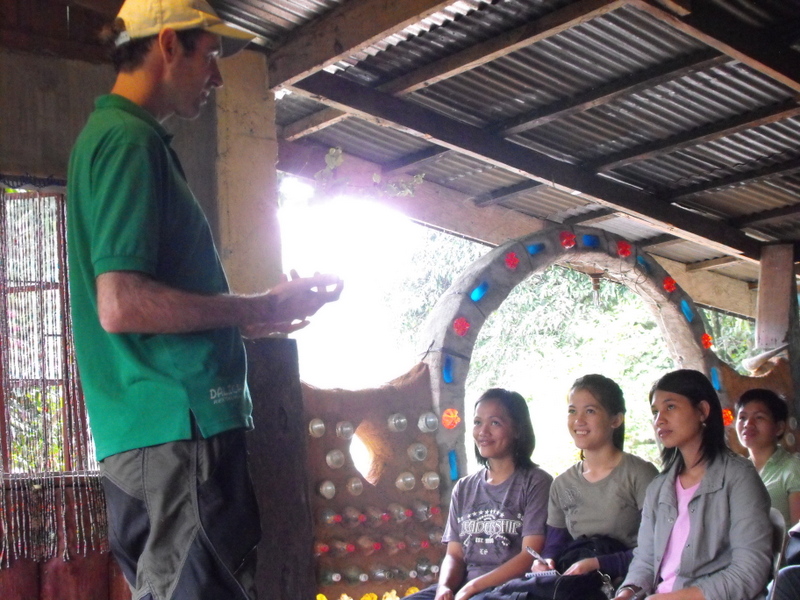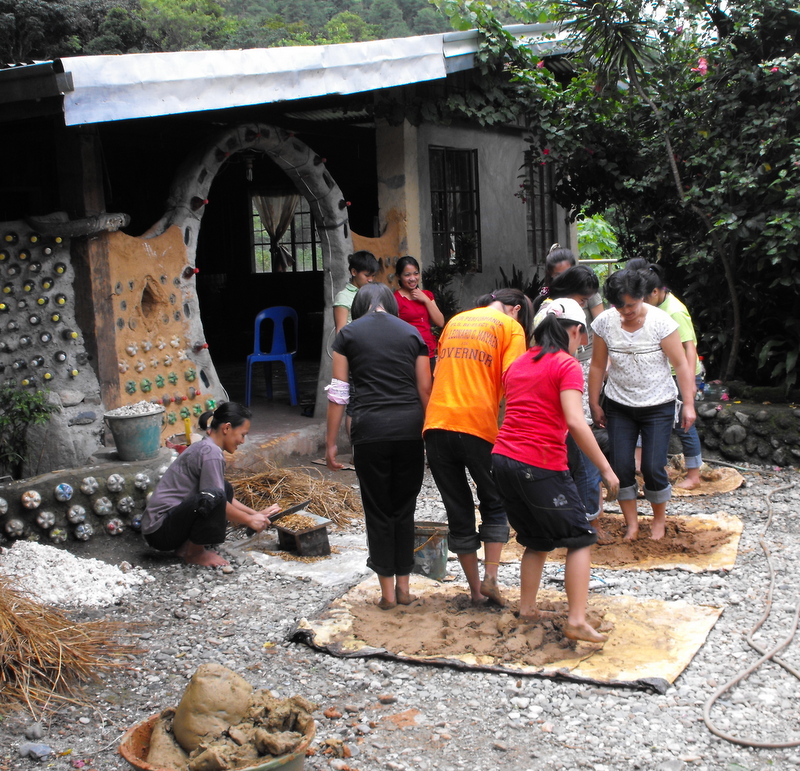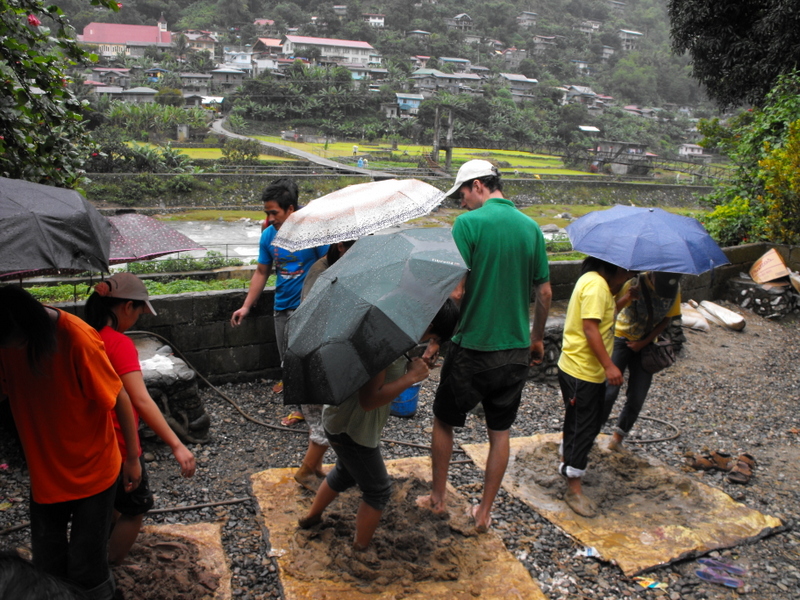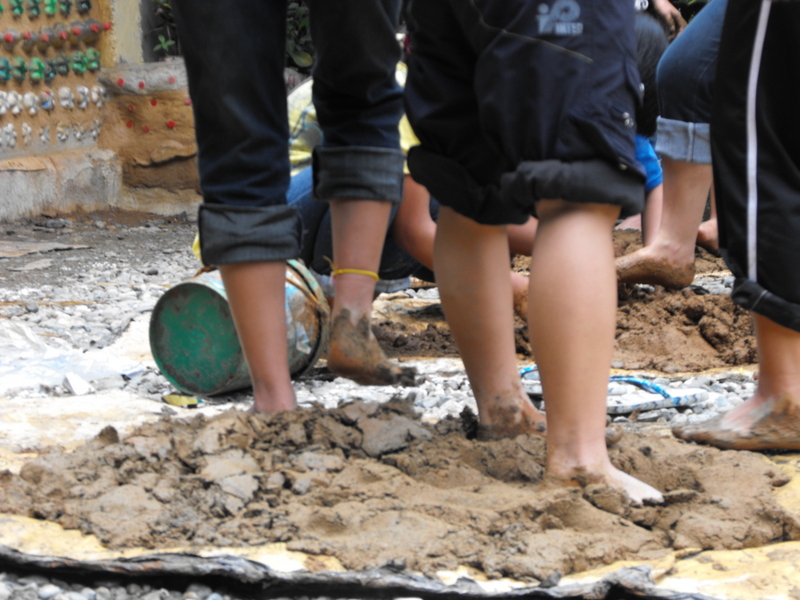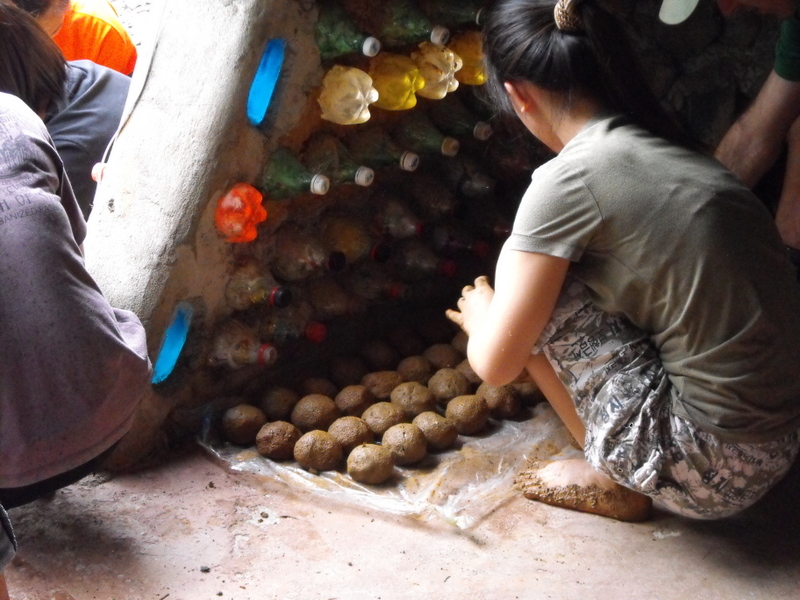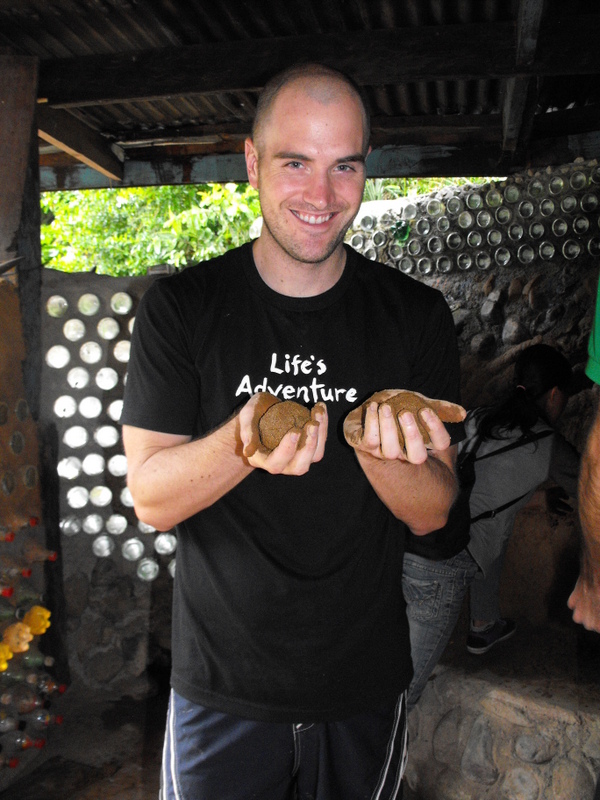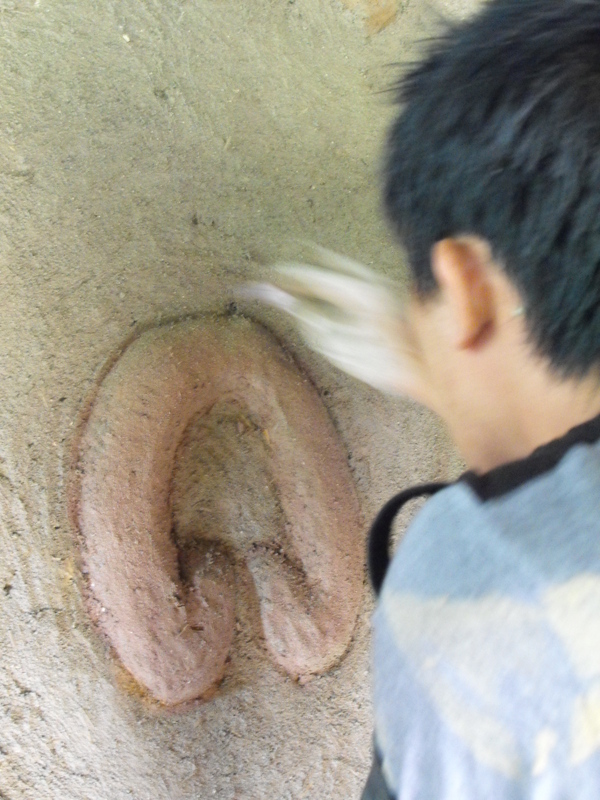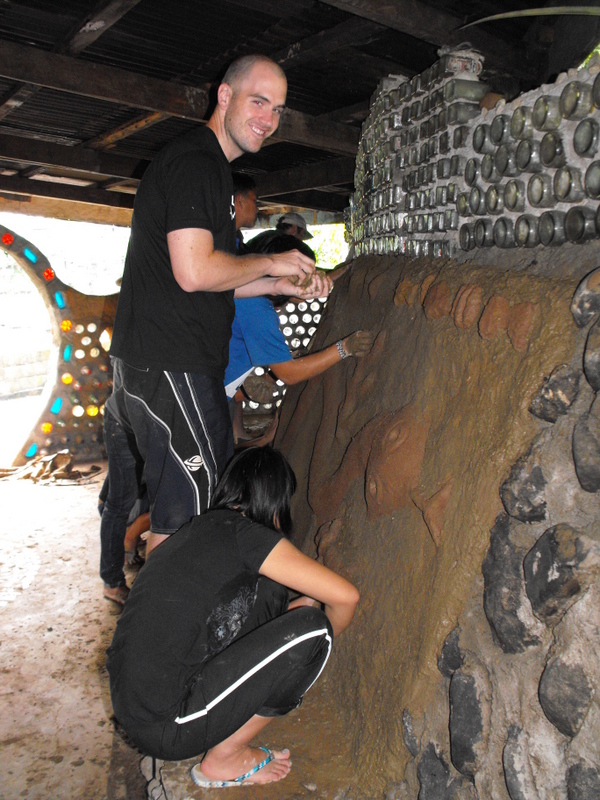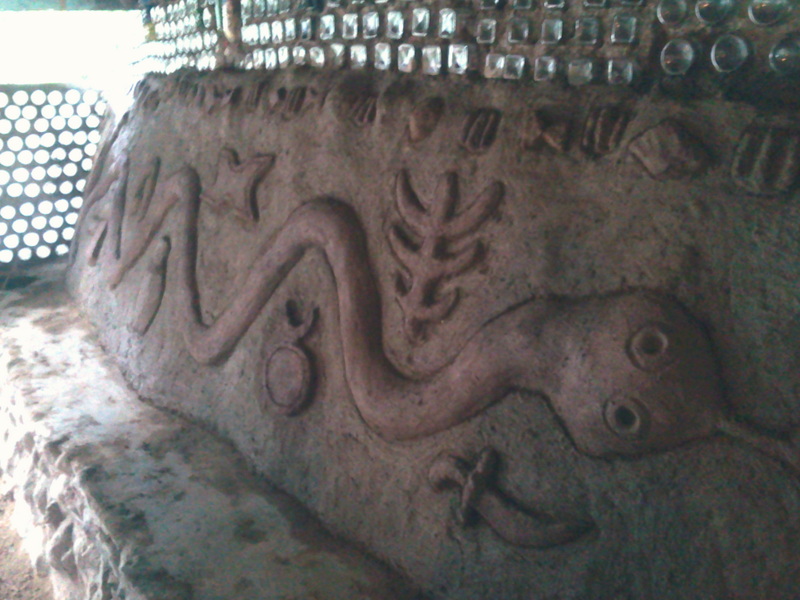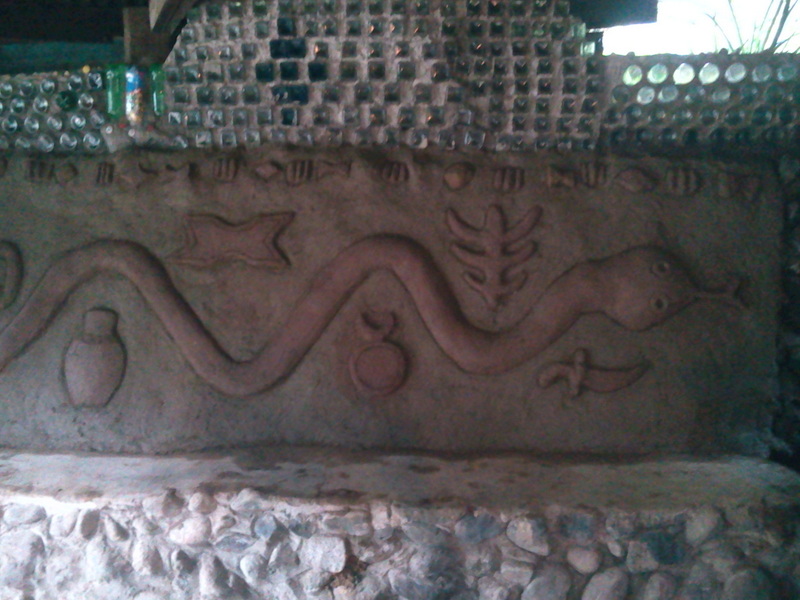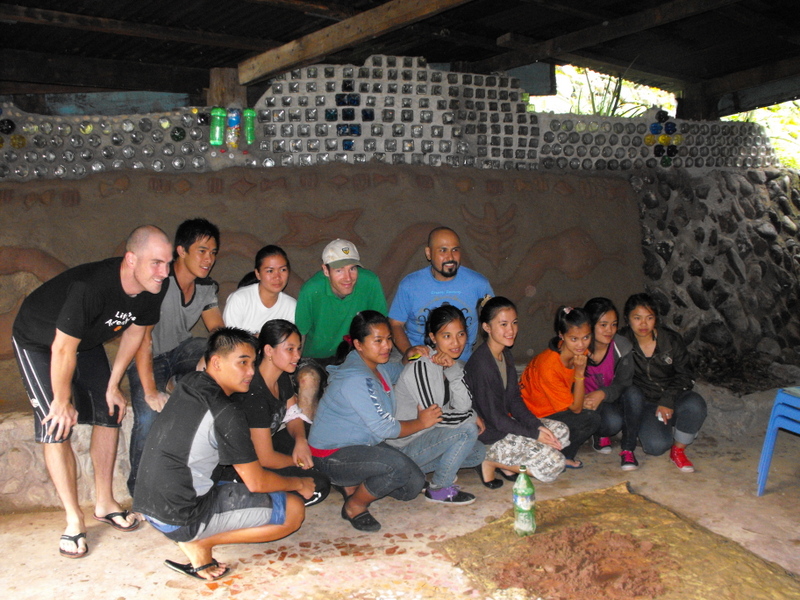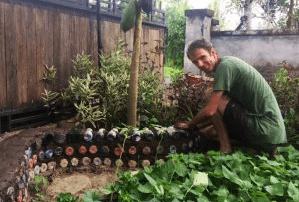Last week, we got down and dirty with some local clay and 20 students from MPSPC college. I have been doing extensive experiments with clay over the last year to perfect our mix ratios with sand, clay, straw and occasionally a little cement powder. The goal has been to create a system for collaboratively generating organic mortar to hold together Ecobrick constructions.
The challenge is that many schools are tempted to use cement to build with Ecobricks, yet, cement is one of the major causes of green house gases (8% of total global output). Cement’s manufacture and transportation consumes a ridiculous amount of energy for the ugly architecture that results. Alas, because of the size of Ecobricks making a wall or bench with them consumes alot of material. So, what good are Ecobricks if building with them is even more harmful to the environment, and worse, guides yet more young people into the antiquated mentality of cement-is-the-only-way-to-build?
Thus our work developing this “organic cement’ or cob mortar. Thus our invitation to the college students to partake!
One amazing quality of this mortar is that, unlike cement, it is awesome to sculpt and make reliefs on the wall! You’ve seen a few forays into this on my blogy, however, I have yet to fully put this to the test.
Working with Sir Brent Bangao and his class from Mountain Province State Polytechnic College, we got to work. Councillor Ernesto Bondad, my good friend and patron here in Sabangan, had volunteered the wall of his beautiful and inspiring riverside meeting-place for the experiment. We gathered sacks of both local clay and some clay waste from a local mine, and set to work mixing, balling, banging, and sculpting a mural. There were students from the college who were studying their Igorot indigenous culture. We had them brainstorm the symbols to be featured in the mural.
The result? Lots of fun! And… a mural that captures the indigenous culture Igorot people here along the Chico river. In particular the legend of the giant Kalawitan snake. The legend goes that long long ago Mt. Kalawitan was guarded by a giant snake. When the snake tried to escape, Kabungan (God) turned it into the river to forever wind its way around the Mountains and keeping them safe. Now the snake will also wind its way on Ernesto’s wall!
And hopefully the environment will be a little safer as these students set out with their insights in organic cement making.
A close up of the mural one and half weeks later. The clay has dried and hasn’t cracked! The two colors are clearly descernable and it has a rough organic texture to it. In one place where the water has leaked from the roof, there is no erosion. Success!

